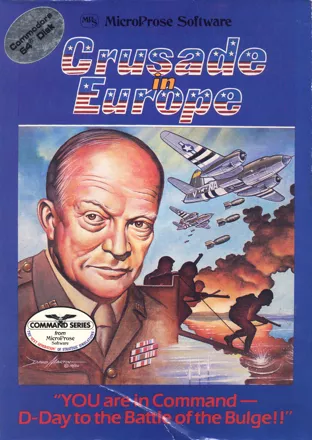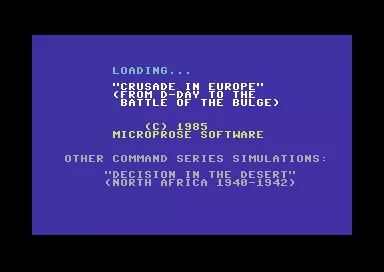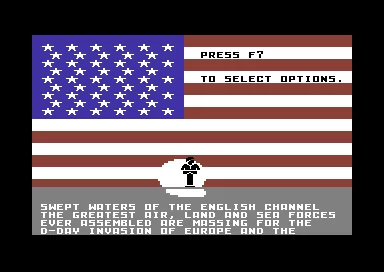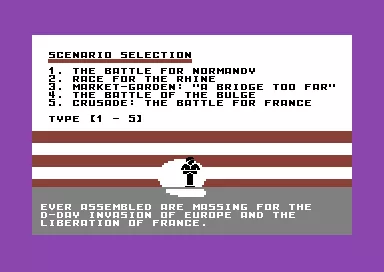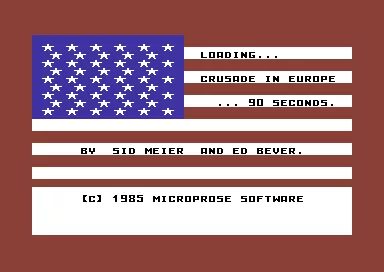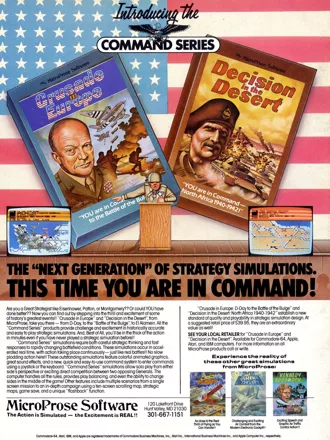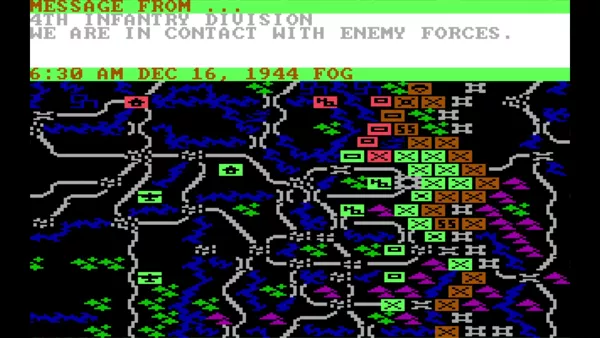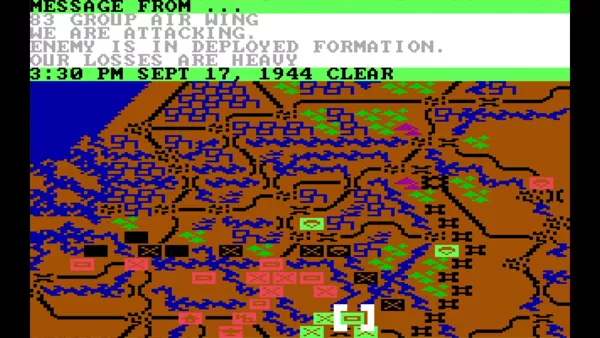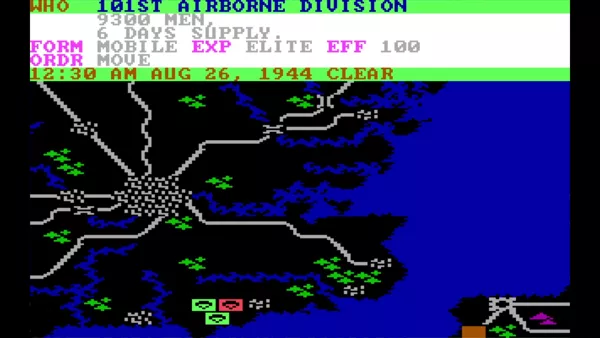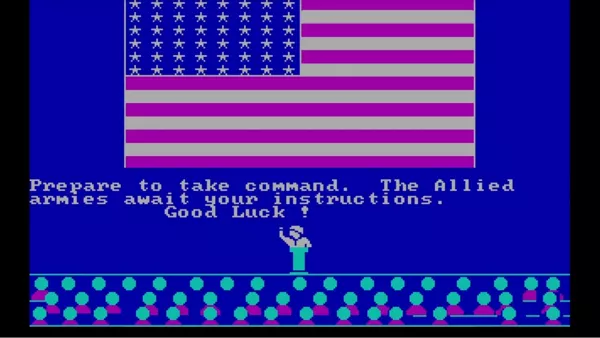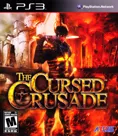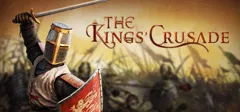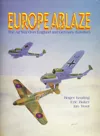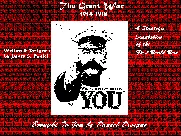Crusade in Europe
Description official descriptions
The first of the Command Series of tactical wargames released by MicroProse in the mid-1980s, Crusade in Europe is the descendant of Meier's first wargame, NATO Commander. Sid Meier and Ed Bever, Ph.D., collaborated on Crusade's design, which (along with the game's manual) shows an enormous amount of research and attention to historical detail.
As the title suggests, the game's focus is the European Theater of World War II in 1944-45, and the Normandy Invasion in particular. Although there are only five scenarios, each can be customized through multiple variants (with different initial deployments and reinforcement schedules) and levels of difficulty. Another nice feature is the ability to play using either traditional boardgame symbols or unit icons. Both sides (Allied and Axis) can be played, and two players can play head-to-head in hotseat mode.
Groups +
Screenshots
Promos
Credits (Commodore 64 version)
| By | |
| Cover Art by |
Reviews
Critics
Average score: 54% (based on 4 ratings)
Players
Average score: 3.5 out of 5 (based on 16 ratings with 2 reviews)
Excellent early war simulation
The Good
Command in Europe is a good strategic simulation of WWII in Western Europe, concentrating on the D-day invasion and concluding with the Battle of the Bulge. CIE offered several alternative situations for the shorter campaigns, and included a few longer campaigns to allow you the flexibility to play the game as you'd like (including a massive 145 day version of the entire campaign). At the time the game came out, there were few strategic simulations as detailed as this one. The map was large enough to appreciate the scale of the whole campaign (one hex=six miles)
Also, the manual was top-notch. At 56 pages, the manual included detailed descriptions of the units and an "example of play" tutorial. Further, there is a detailed 10 page section describing the campaigns you are fighting to give you a historical sense of background.
The Bad
Some of your units may start in Garrison formation. You can't move them until they are released. There should have been an option to turn off Garrison formations.
Like many games of that time (and many games now), the computer compensates for weak AI by cheating. On the higher levels of difficulty, the computer cheats by upping the strength of their units considerably...
It was rather easy for the player to cheat if you were the Allied player by destroying the German supply depots... Lots of units surrendering quickly is fun at times, but the implementation could have been improved (and was in Conflict in Vietnam).
The game ran painfully slow. Even on automatic (computer v. computer), the full campaign could run for 6-8 hours if you didn't freeze the game to issue orders. The 128k setting ran even slower. Thus, even though my machine could handle the 128k version, I would run the 64k version for a little more speed. Delightfully, if you play this game on an Apple emulator, the speed problem disappears.
"Operational Day Codes" act as a weak copy-protection scheme. Of course, there were only sixteen of them, so it was relatively easy to memorize two or three and reboot until that number came up!
Once the Allied front lines had driven deep into France and captured Calais and Dunkirk, you'd think that reinforcement troops would come in from those areas. However, almost all of the Allied reinforcements arrive at the Normandy beaches. I don't know if this is historically accurate or not, but it's a pain to have to scroll all the way across the map to order your reinforcements to the front line.
Finally, one of the most disappointing aspects was that there was no scenario editor of any type. It would have been nice to set up special situations or "what-if" scenarios that the designers didn't include (Like a cross-channel attack on Calais and Dunkirk)
The Bottom Line
I'd say that Crusade in Europe is the best of the "Command Series" simulations by Microprose in that you have a full campaign option allowing for the most flexibility. Although it wasn't flawless, it provided a good feel for the strategic situation of the D-Day invasion, something which seems to be lacking in today's games.
Apple II · by ClarkBHM (279) · 2004
AI Good for its time, Game draws me 20 years later...
The Good
Probably the most fun simulation for the Recovery of France time of WW2. It is very entertaining to watch Patton's army drive across France (assuming you were smart enough to plan for its breakout. It is equally fun to lock the Allies on the beachfront and slowly squoosh them back into the sea (Channel, whatever...).
The Bad
The one-player AI leaves a lot to be desired. Even on the toughest setting, it can be beat soundly by an educated foe. Also, I had some problems with running the program in Windows 98.
The Bottom Line
This is one program that displays Patton's capabilities appropriately. It's a fine DDay-plus wargame.
Apple II · by Richard Jender (1) · 2005
Trivia
Development
According to the manual, Sid Meier programmed the original Crusade in Europe for the Commodore and converted the game to the Atari. Jim Synoski converted it to the Apple and Don Awalt converted it to the IBM.
Information also contributed by ClarkBHM
Analytics
Identifiers +
Contribute
Are you familiar with this game? Help document and preserve this entry in video game history! If your contribution is approved, you will earn points and be credited as a contributor.
Contributors to this Entry
Game added by PCGamer77.
Windows added by Sciere. Atari 8-bit added by Terok Nor.
Additional contributors: jean-louis, Patrick Bregger.
Game added June 20, 2000. Last modified March 13, 2025.


